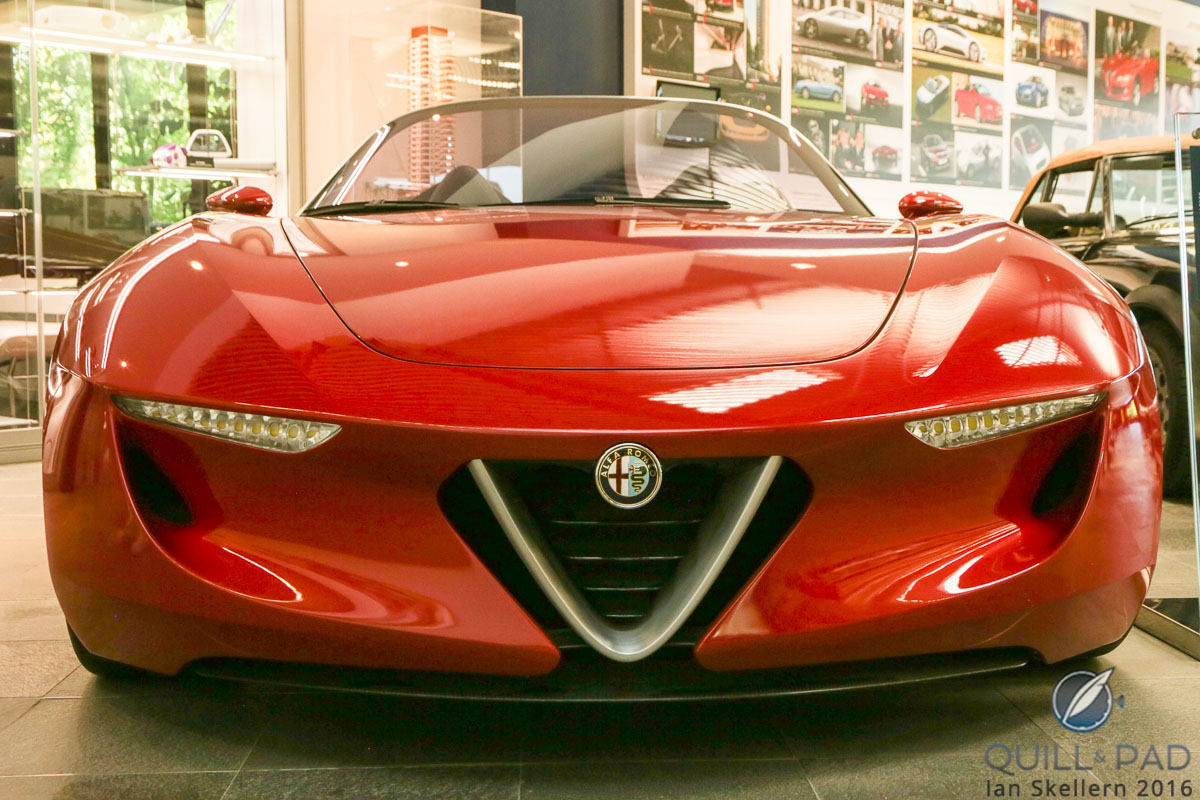The Ottantasei Tourbillon is the sixth timepiece designed by Pininfarina for Bovet, and the years of experience that the two brands now have working together shows.
Thanks largely to the acclaimed Californian Art Center College of Design in Pasadena, California is home to the world’s largest concentration of great automotive design studios.
But how many Californian car design studios can you name without thinking deeply? When it comes to the world’s greatest looking supercars, there is one name that nearly everyone knows: Pininfarina.
With a flying tourbillon, patented winding system, and ten-day power reserve, the Ottantasei truly is a sensational watch, but I will go into that in more detail at a later date because here the focus is on Pininfarina, a name evoking mystical status among anyone interested in world-class design and sensational cars.
Pininfarina’s creations are badged under a wide variety of brands and logs, but on leaving the studio’s drawing board they usually become very loud and extremely fast.
Longterm clients of Pininfarina include Ferrari, Alfa Romeo, Lancia, Maserati, and many others.
Battista’s son Sergio ran Pininfarina until 2001, after which his grandson Andrea took the helm until his death in 2008. After Andrea’s passing his younger brother Paolo was appointed CEO and chairman of the board.
Pininfarina was one of the first coachbuilders to use monocoque chassis/body designs. While other coachbuilders were scared of the monocoque technology putting them out of business, Pininfarina persisted and eventually reaped the rewards: the method was an engineering breakthrough, adding significant strength to the car without adding weight − of particular concern to racing cars and sports cars.
This is what Wikipedia has to say about Pininfarina: “Pininfarina S.p.A. is an Italian car design firm and coachbuilder in Cambiano, Italy. It was founded by Battista Farina in 1930. Pininfarina is employed by a wide variety of automobile manufacturers to design vehicles.”
While that description is, as far as I can ascertain, 100 percent accurate, it does not convey even the slightest fraction of the heart-pounding, pulse-racing, adrenaline-boosting, passion-inducing shapes and designs that Pininfarina has created.
Even the name “Pininfarina” has an interesting story. In its early days, the company was called “Farina,” the family name of founder Battista Farina. By all accounts he was not a large man, which led to him being affectionately known as “Pinin,” which means “small” in the local dialect. As his reputation spread, so did the name name: “Pinin” Farina became “Pinin Farina,” which led to both family and company officially becoming “Pininfarina.”
In December 2015, Pininfarina was bought by the Mahindra Group of India, which should help the Italian brand to expand into other markets. Paolo Pininfarina has been reconfirmed as CEO and chairman of the board so the studio is likely to stay as Italian as fresh pasta.
The Museum of Modern Art (MOMA) in New York has two Pininfarina cars on display: the 1946 Cisitalia 202, which is described as being “one of the eight outstanding cars of our time,” and the 1963 PF Sigma, an experimental safety car.
Since the 1980s, Pininfarina has also designed everything from fast trains, buses, and trams to yachts, planes, and private jets. In 1986 the firm launched Pininfarina Extra, a division focusing on industrial design, graphic design, interior design, and architecture.
To be honest, I don’t really care what other fields of design Pininfarina gets into as long as it keeps producing a steady stream of sensational supercars.
I’d like to thank Bovet for arranging the visit to Pininfarina.
The Pininfarina Sigma Grand Prix car from 1969 was a test bed of innovative safety features for the time[/caption]
